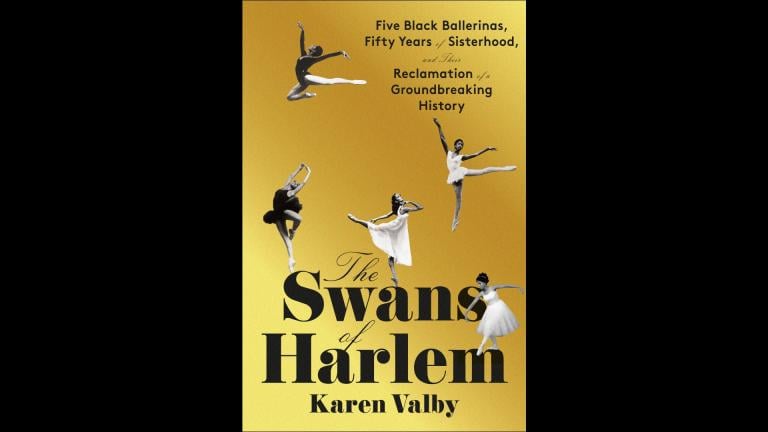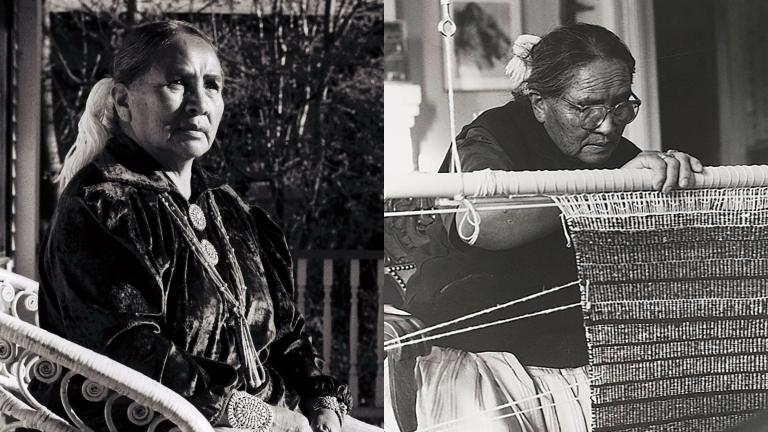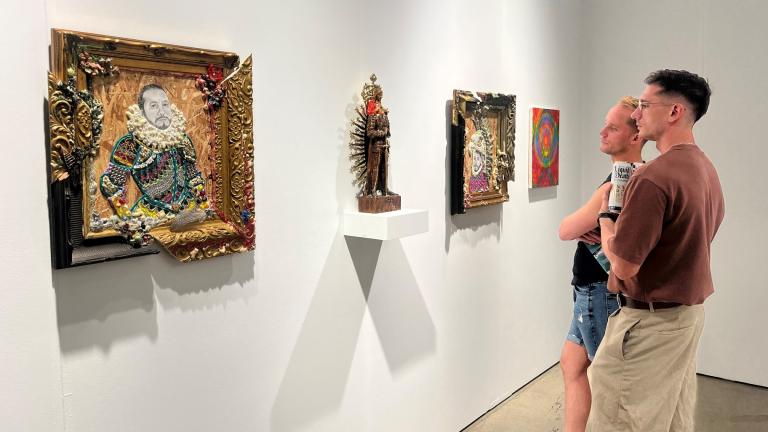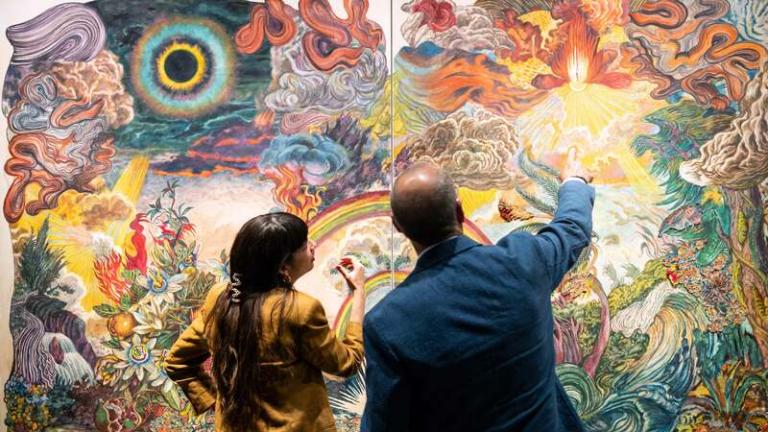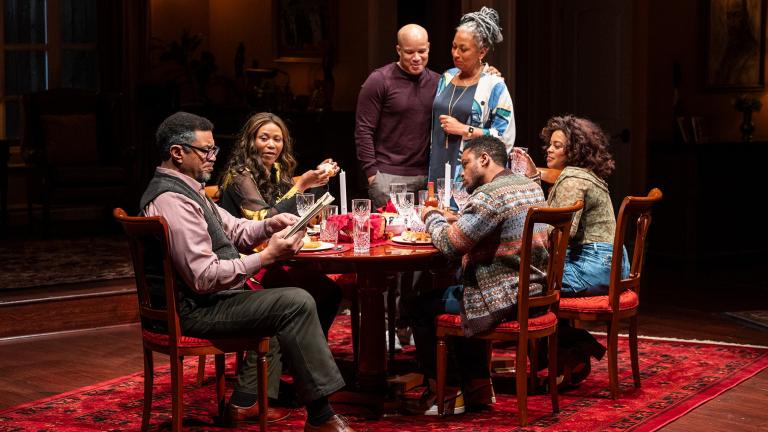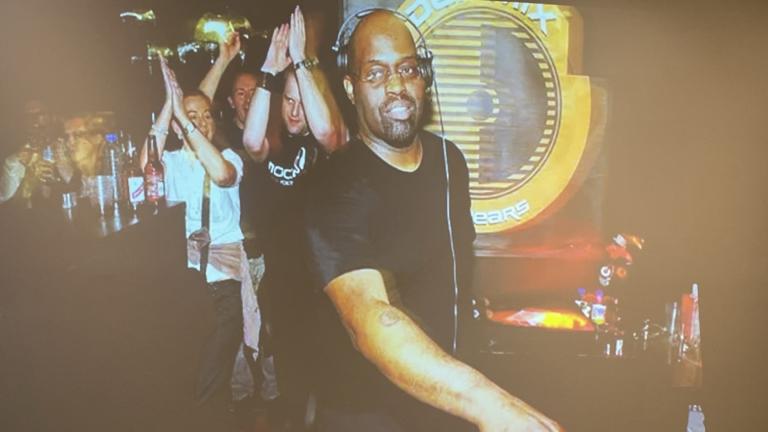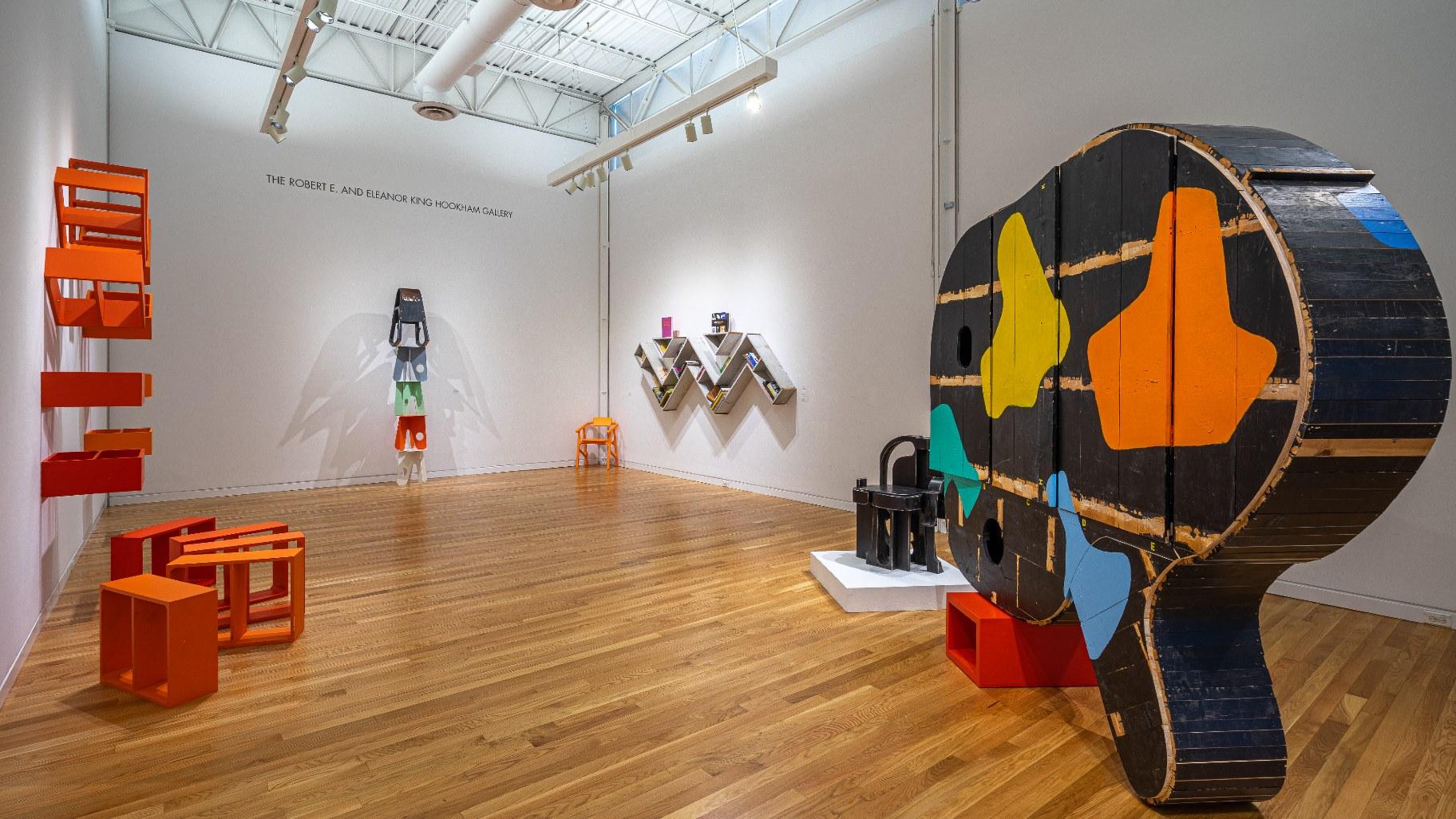 “A Love Supreme: Norman Teague” exhibit at the Elmhurst Art Museum. (Credit: Siegfried Mueller Photography)
“A Love Supreme: Norman Teague” exhibit at the Elmhurst Art Museum. (Credit: Siegfried Mueller Photography)
A new exhibit conceptualized by social practice artist, furniture maker and designer Norman Teague is now open at the Elmhurst Art Museum.
With musical accompaniment by John Coltrane’s album “A Love Supreme,” which gave the exhibition its name, Teague’s work is a reflection of his Chicago upbringing and classic design technique.
Teague’s figurative furniture is surrounded by bright, eye-catching colors that are not traditional to the hues normally used to decorate a home’s interior. Among bending figures stands familiar furniture items, including a zig-zag bookshelf made of recycled cedar and a rocking chair, of sorts, without a back that’s dubbed a Sinmi Stool. It sits atop a series of stacked colorful stools.
It’s a signature piece of Teague’s that was first introduced to me when I interviewed him a few years ago after he joined Theaster Gates and the Rebuild Foundation.
Teague is also one of the featured artists in Art Design Chicago. Sponsored by the Terra Foundation for American Art, the organization works to amplify creative communities within the city.
The sculptural and instillation-based works range in both the materials used and the artists with whom he collaborated.
A piece titled “Ibaaka AKA Mule” is made of poplar and leather in collaboration with Yohance Lacour, a leather craftsman.
In my view, one of the signature pieces is “Ipè ibujoko AKA Trumpet Bench,” which looks exactly how it sounds. A trumpet is bent into the back of a neon orange bench. Written on top of recycled church organ pipes reads the phrase “Care Acre Care.”
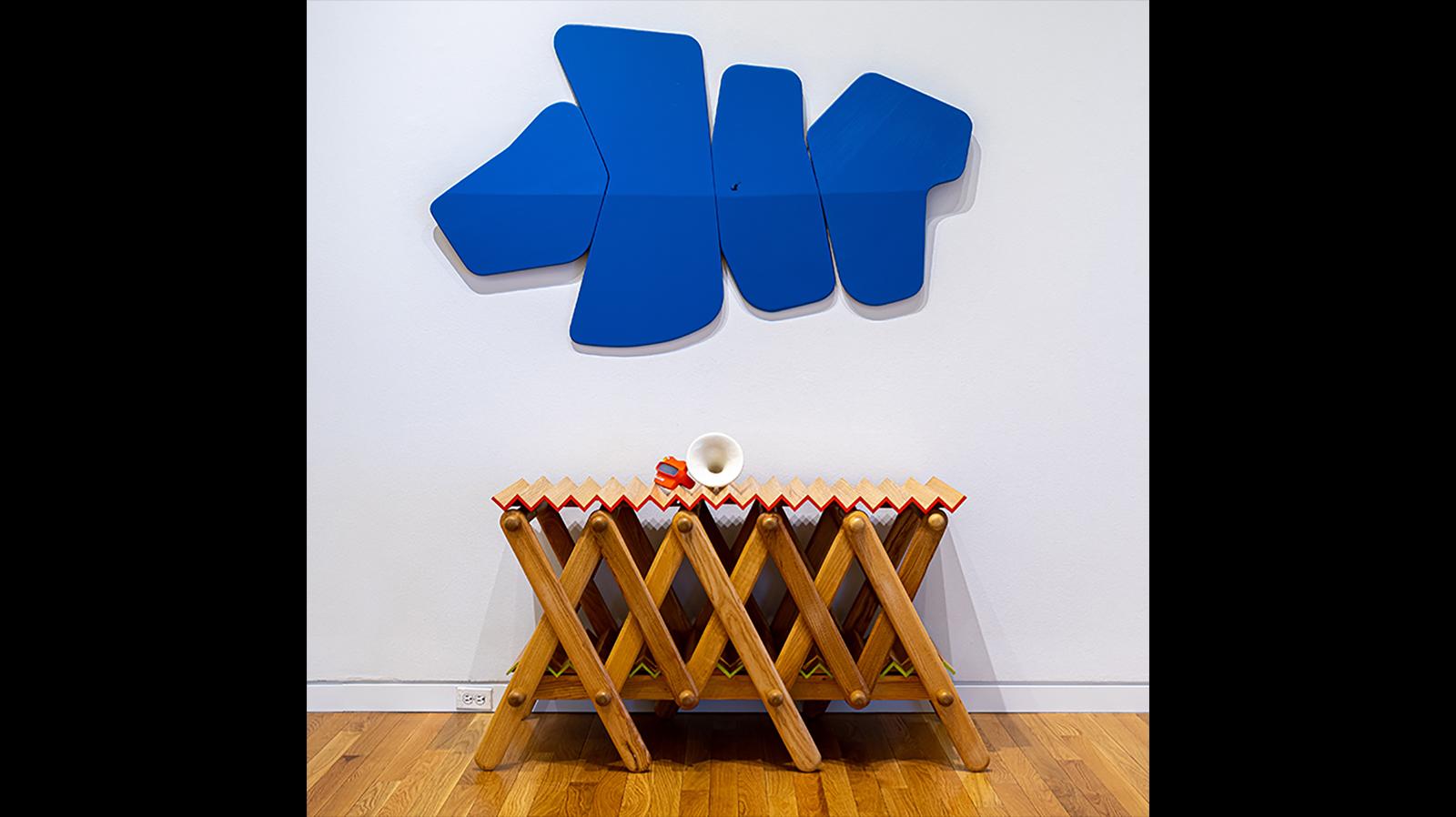 “Bulu Akọsilẹ AKA Blue Note” is pictured with “Hutch naa AKA The Hutch.” (Credit: Siegfried Mueller Photography)
“Bulu Akọsilẹ AKA Blue Note” is pictured with “Hutch naa AKA The Hutch.” (Credit: Siegfried Mueller Photography)
Another captivating piece is “Bulu Akọsilẹ AKA Blue Note.” Made in collaboration with Francisca Villagrana, the piece used wood and porcelain, with the cast made from a French horn.
Whether through pieces titled “Da Crib,” “Jive” and “Excuse me I’m Speaking,” or materials like brass, jazz’s impact on Teague and his work is clear. That work is described as a reflection of unapologetic Black aesthetics that validate the creative communities of color deemed untraditional in their practice.
Outside of jazz, other influences reflected in his work include designer Chuck Harrison and sculptor Martin Puryear.
This solo exhibit is also accompanied by a group exhibition in the Mies van der Rohe’s McCormick House titled, “A Love Supreme: McCormick House Reimagined.” It features more than 30 Chicago-based architects, artists and designers of color. Co-curated with Rosa Camara, the artists’ pieces reflect their personal story based on the question of who awakened them artistically and personally, just as Coltrane did to Teague.
“I believe there is a quest for craft from the imaginations of Black America that needs to be heard, seen, and felt as safe, desired, and beautiful. And it can only come from us,” says Teague.
“A Love Supreme: Norman Teague” runs through April 18. For more information visit elmhurstmuseum.org.
Follow Angel Idowu on Twitter: @angelidowu3
Angel Idowu is the JCS Fund of the DuPage Foundation Arts Correspondent.

